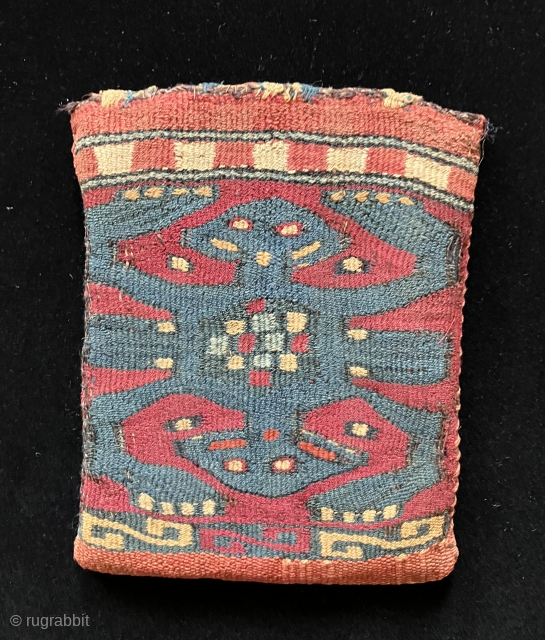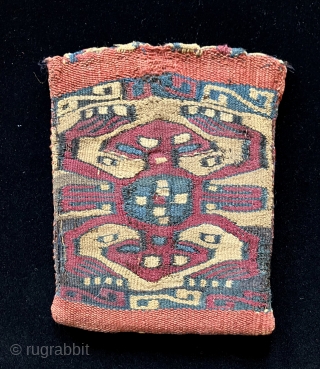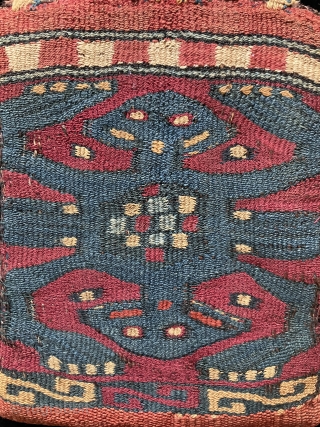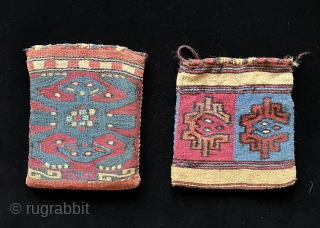Back
Small two-sided tapestry bag from the Nasca/Wari period. a.d. 400 – 700. The iconography is that of a double-headed anthropomorphic or zoomorphic being with arms and/or legs akimbo. Double–headed figures are ubiquitous in Pre-Columbian art. Sometimes the lower head resembles or represents the generative organs. This “alien-like” composite being could possibly represent an avian figure or even a shaman shape-shifter, but this is only speculation on my part. Whatever its meaning, the double and even triple entendre concept was well understood and often utilized in the world of ancient Andean textile art design. Professionally conserved. Size: 4.5 x 5.75 inches.
price:
Inquire directly to jameswblackmon@gmail.com
- Home
- Antique Rugs by Region
- Category
- Profiles
- Post Items Free
- Albums
- Benaki Museum of Islamic Art
- Budapest: Ottoman Carpets
- Gulbenkian Museum
- Islamic Carpets. Brooklyn
- Islamic Textiles. Brooklyn
- Konya Museum: Rugs
- MKG, Hamburg
- MMA: Caucasian Carpets
- MMA: Mamluk Carpets
- MMA: Mughal Indian Carpets
- MMA: Ottoman Carpets
- MMA: Safavid Persian Carpets
- MMA: Turkmen Rugs
- McCoy Jones Kilims
- Ottoman textiles. Met
- Philadelphia Museum
- Rugs and Carpets: Berlin
- Seljuqs at the Met
- TIEM, Istanbul: Carpets
- V&A: Classical Carpets
- Vakiflar Carpets: Istanbul
- Baluch Rugs: Indianapolis
- Gallery Exhibitions
- Jaf an Exhibition
- Alberto Levi Gallery
- Andean Textile
- Christie's London: 2016
- Francesca Galloway
- HALI at 40
- ICOC Washington, DC 2018
- Jajims of the Shahsavan
- London Islamic Week April, 2018
- Mongolian Felts
- Navajo Rugs: JB Moore
- Persian Piled Weavings
- SF Tribal & Textile Art Show 2020
- SF Tribal 2019
- Sotheby's: C. Alexander
- Turkish Prayer Rugs
- Turkmen Main Carpets ICOC 2007










